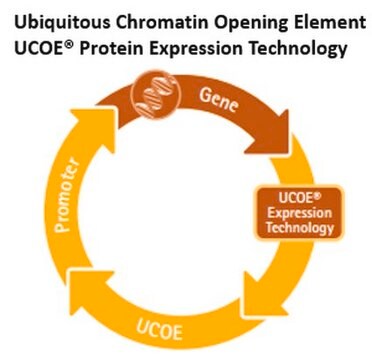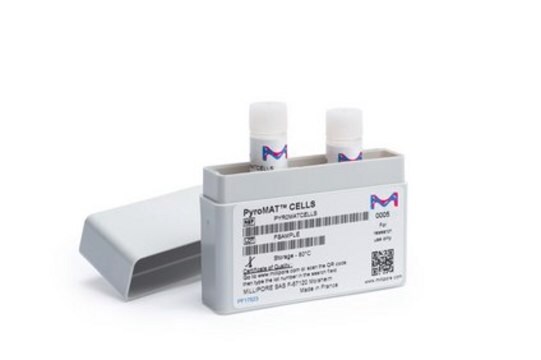MABS1252
Anti-Polycystin-1 Antibody, clone E4 (5F4D2)
clone E4 (5F4D2), from mouse
Sinônimo(s):
Polycystin-1, Autosomal dominant polycystic kidney disease 1 protein
About This Item
Produtos recomendados
fonte biológica
mouse
Nível de qualidade
forma do anticorpo
purified immunoglobulin
tipo de produto de anticorpo
primary antibodies
clone
E4 (5F4D2), monoclonal
reatividade de espécies
human, mouse, rat
técnica(s)
immunocytochemistry: suitable
immunohistochemistry: suitable (paraffin)
immunoprecipitation (IP): suitable
western blot: suitable
Isotipo
IgG1κ
nº de adesão NCBI
nº de adesão UniProt
Condições de expedição
wet ice
modificação pós-traducional do alvo
unmodified
Informações sobre genes
human ... PKD1(5310)
Descrição geral
Especificidade
Imunogênio
Aplicação
Immunoprecipitation Analysis: A representative lot immunoprecipitated polycystin-1 from mouse lung tissue lysates (Courtesy of Dr. Feng Qian, University of Maryland School of Medicine, Baltimore, MD).
Western Blotting Analysis: A representative lot detected exogenously expressed polycystin-1 in lysates from HEK cells transfected with human or mouse Pkd1 cDNA, but not in lysates from mock-transfected HEK cells (Courtesy of Dr. Feng Qian, University of Maryland School of Medicine, Baltimore, MD).
Western Blotting Analysis: A representative lot detected the polycystin-1 (PC1) GPS domain cis-autocleaved N-terminal fragment (NTF) in lysates from HEK cells transfected with full-length Pkd1 cDNA, but not in lysates from mock-transfected HEK cells (Kim, H., et al. (2014). Nat. Commun. 5:5482).
Immunocytochemistry Analysis: A representative lot and an anti-Arl13b antibody co-stained the primary cilium of 4% formaldehyde-fixed, 0.1% Triton X-100-permeabilized murine embryonic fibrolasts (mMEF) and collecting duct (CD)-derived cells by dual fluorescence immunocytochemistry. No polycystin-1 immunoreactivity was detected in Pkd1-knockout mMEFs (Kim, H., et al. (2014). Nat. Commun. 5:5482).
Signaling
Developmental Signaling
Qualidade
Immunohistochemistry Analysis: An 1:250 dilution of this antibody lot detected polycystin-1 immunoreactivity in human kidney tissue.
Descrição-alvo
forma física
Armazenamento e estabilidade
Outras notas
Exoneração de responsabilidade
Não está encontrando o produto certo?
Experimente o nosso Ferramenta de seleção de produtos.
Código de classe de armazenamento
12 - Non Combustible Liquids
Classe de risco de água (WGK)
WGK 1
Ponto de fulgor (°F)
Not applicable
Ponto de fulgor (°C)
Not applicable
Certificados de análise (COA)
Busque Certificados de análise (COA) digitando o Número do Lote do produto. Os números de lote e remessa podem ser encontrados no rótulo de um produto após a palavra “Lot” ou “Batch”.
Já possui este produto?
Encontre a documentação dos produtos que você adquiriu recentemente na biblioteca de documentos.
Nossa equipe de cientistas tem experiência em todas as áreas de pesquisa, incluindo Life Sciences, ciência de materiais, síntese química, cromatografia, química analítica e muitas outras.
Entre em contato com a assistência técnica







